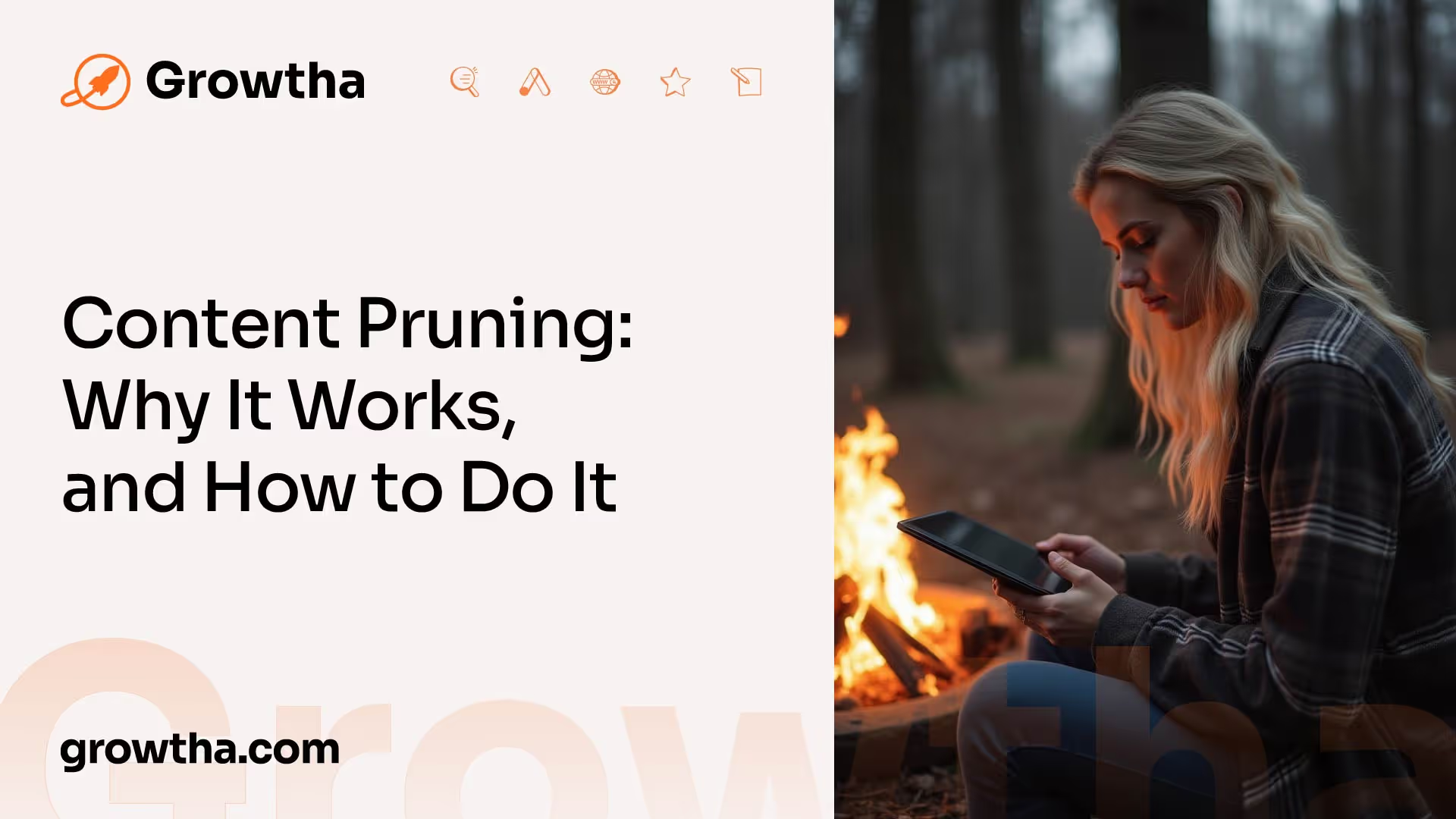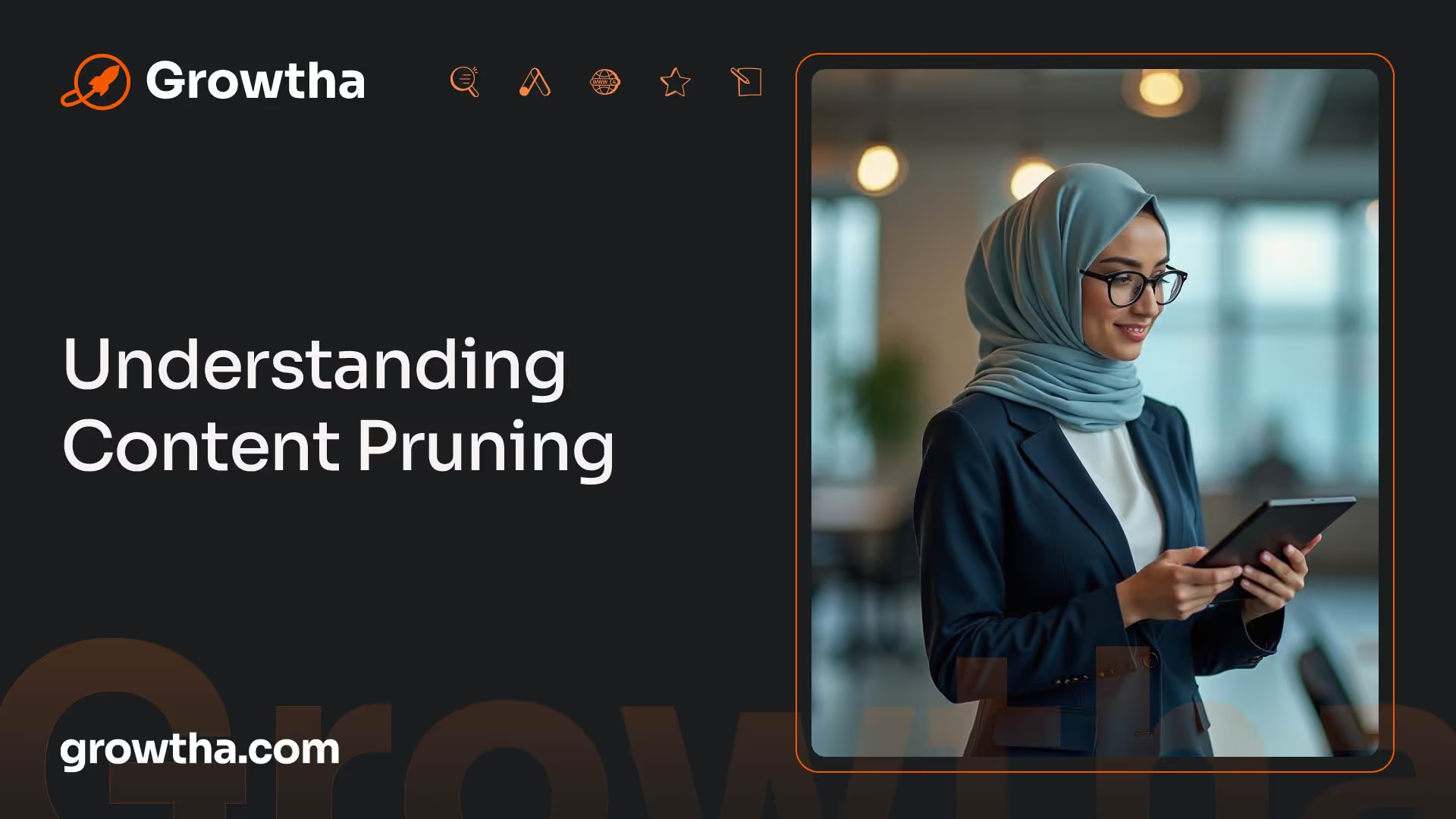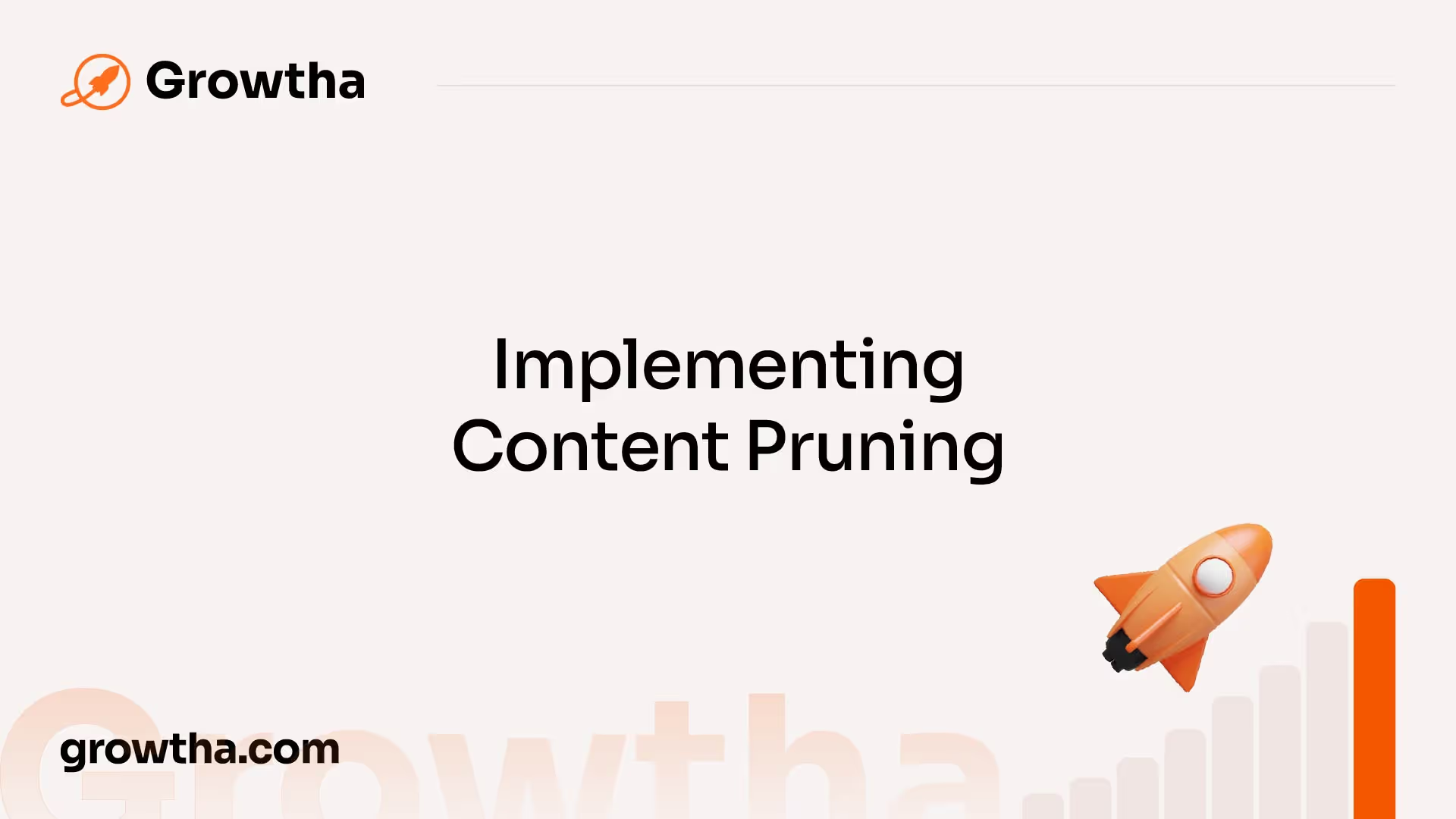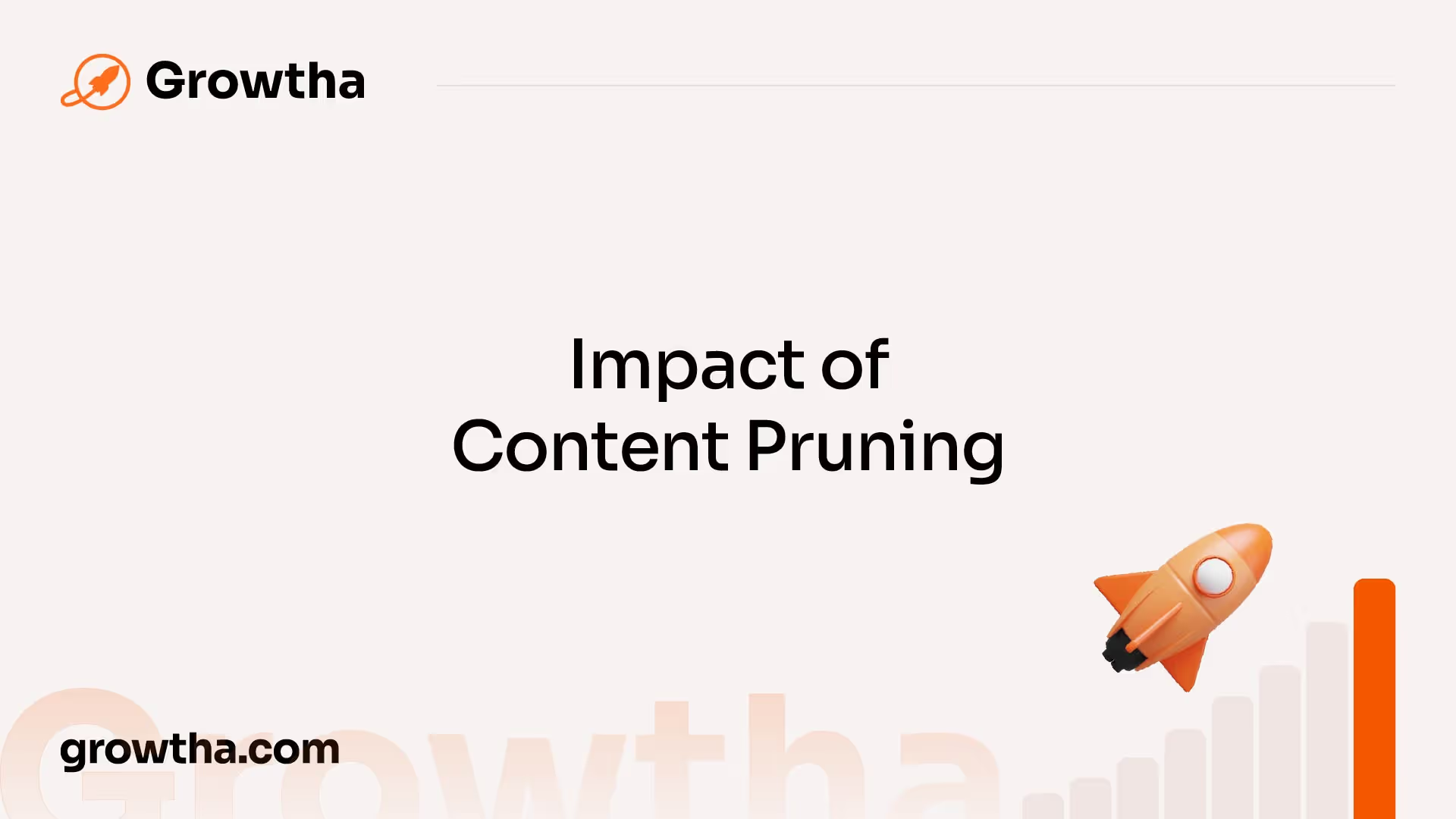Content Pruning: Why It Works, and How to Do It
Content pruning refers to the process of strategically removing underperforming or irrelevant content from a website.


Content Pruning: Why It Works, and How to Do It
Understanding Content Pruning

In the world of SEO, content pruning has emerged as a powerful technique for improving website performance. This section will explore the definition and importance of content pruning, as well as the effects of content decay.
Definition and Importance
Content pruning refers to the process of strategically removing underperforming or irrelevant content from a website. It involves identifying and eliminating pages with low traffic or conversion rates, thin or duplicate content, or posts that have become outdated [1]. By pruning the content, website owners can ensure that their best and most valuable content remains visible to users and search engines.
The importance of content pruning lies in its ability to optimize a website's content inventory. By removing low-performing or outdated content, website owners can focus on promoting and enhancing the content that truly matters. This helps to improve the overall user experience, increase organic traffic, and boost search engine rankings.
Effects of Content Decay
Content decay refers to the gradual decline in the usefulness and value of content over time. As information becomes outdated or less relevant, it can lead to a drop in rankings as search engines prioritize "freshness" [1]. Content decay can occur due to various factors, including changes in industry trends, outdated information, or shifts in user preferences.
Allowing content decay to persist can have negative consequences for a website's performance. Outdated or irrelevant content may not provide the value that users are seeking, leading to a decline in user engagement and satisfaction. Additionally, search engines may consider such content less valuable and rank it lower in search results.
By implementing content pruning techniques, website owners can address content decay effectively. Removing outdated or low-performing content allows for the promotion of high-quality, relevant content that continues to provide value to users. This can help maintain search engine rankings and ensure that the website remains a trusted source of information.
Understanding the concept and importance of content pruning, as well as the effects of content decay, sets the stage for exploring the benefits and strategies of implementing content pruning techniques.
Benefits of Content Pruning

Content pruning offers several benefits for websites looking to improve their performance and overall SEO strategy. By focusing on relevant content, enhancing user experience, and improving organic traffic, content pruning can be a valuable tool in optimizing your website's content.
Focus on Relevant Content
One of the key benefits of content pruning is the ability to focus on relevant content that resonates with your target audience. By removing underperforming or outdated content, you can prioritize the content that drives the most value and engagement. This targeted approach allows visitors to easily find the information they are looking for, leading to higher user satisfaction and increased time spent on your website. By focusing on relevant content, you can better align your website with the needs and interests of your audience, ultimately improving your overall content strategy.
Enhancing User Experience
Content pruning plays a crucial role in enhancing user experience on your website. By removing low-quality or irrelevant content, you create a more streamlined and user-friendly website. Visitors will have a better browsing experience as they navigate through your site, finding valuable and meaningful content. Improved user experience can lead to increased engagement, lower bounce rates, and higher conversion rates. When users can easily find the information they need, they are more likely to stay on your site, explore further, and take the desired actions.
Improving Organic Traffic
Content pruning can have a significant impact on improving organic traffic to your website. By removing low-performing or outdated content, you allow search engines to focus on indexing and ranking your high-quality content. This can lead to improved visibility in search engine results pages (SERPs) and higher organic rankings. Additionally, content pruning allows for the improvement of internal and external linking by directing the audience towards high-quality resources, supporting trustworthiness and authority within your website ecosystem [1]. With a more streamlined and optimized website, you increase the chances of attracting organic traffic and driving qualified visitors to your site.
Content pruning is a powerful technique that can yield significant benefits for your website. By focusing on relevant content, enhancing user experience, and improving organic traffic, you can optimize your website's performance and ensure that your audience finds value in the content you provide. Implementing a strategic content pruning strategy can lead to improved SEO, higher engagement, and ultimately, better results for your online presence.
Implementing Content Pruning

To effectively implement content pruning, it is essential to utilize the right tools for content analysis, follow a well-defined process, and determine the appropriate frequency for conducting content reviews.
Tools for Content Analysis
To begin the content pruning process, it is crucial to employ tools that can assist in analyzing your website's content. One popular tool for this purpose is Screaming Frog, which can scrape a list of all the content on your site for analysis. This tool provides valuable insights into various aspects of your content, such as meta data, word count, and page performance metrics.
By utilizing content analysis tools, you can obtain a comprehensive overview of your website's content landscape, making it easier to identify underperforming pages, duplicate content, or posts that have become irrelevant.
Process Overview
Implementing content pruning involves a well-defined process to ensure that the right content is identified for removal or improvement. The process typically consists of three steps: identifying content with no redeeming qualities, determining if the content has the potential for improvement, and making a decision to remove or keep the content.
During the identification phase, it is vital to evaluate metrics such as traffic, conversion rates, and engagement to determine which pages are underperforming. Pages with low traffic, thin or duplicate content, or outdated information are prime candidates for removal.
For content that shows potential for improvement, evaluate factors such as relevance to your target audience, search engine optimization (SEO) potential, and the ability to update the content to meet current standards. By assessing these aspects, you can decide whether to invest in improving the content or remove it altogether.
Frequency Recommendations
The frequency at which content pruning should be conducted can vary depending on various factors. While there is no one-size-fits-all approach, recommendations typically range from conducting content reviews once a year to once every six months [2].
Regular content pruning allows you to stay proactive in maintaining a clean and relevant website. Removing low-quality or outdated content helps improve your site's content strategy, ensuring that your audience is presented with high-quality, valuable information.
By adhering to a regular content pruning schedule, you can continuously refine and optimize your website's content, ultimately improving its overall performance.
Implementing content pruning requires utilizing the right tools, following a well-defined process, and determining the appropriate frequency for conducting content reviews. By effectively implementing content pruning, you can ensure that your website remains fresh, relevant, and appealing to your audience.
Strategies for Successful Content Pruning

To effectively implement content pruning, it's important to follow a strategic approach. The process involves identifying low-performing content, evaluating it for improvement, and making informed decisions about its future on your website.
Identifying Low-Performing Content
The first step in content pruning is identifying which content is underperforming. This includes pages with low traffic or conversion rates, as well as those with thin or duplicate content that may negatively impact your website's overall performance.
To identify low-performing content, you can utilize various tools for content analysis. These tools provide data on page views, bounce rates, time on page, and other metrics that can help you gauge the performance of your content. By analyzing this data, you can pinpoint the pages that are not meeting your goals or contributing to your website's success.
Evaluating for Improvement
Once you have identified the underperforming content, the next step is to evaluate whether it can be improved. Some content may simply need updates or enhancements to make it more valuable and engaging to your audience.
During the evaluation process, consider factors such as relevance, quality, and user engagement. Ask yourself if the content aligns with your current goals and if it provides value to your target audience. If the content can be enhanced to meet these criteria, you may consider investing time and resources into improving it rather than removing it entirely.
Decision-Making Process
After evaluating the underperforming content, it's time to make informed decisions about its future on your website. Depending on the evaluation results, you may choose one of several options: updating and optimizing the content, consolidating it with other relevant content, redirecting it to more relevant pages, or removing it altogether.
When making these decisions, consider the overall goals and objectives of your website. Focus on keeping high-quality, relevant content that aligns with your target audience's needs and interests. Remember that content pruning is about quality over quantity, and removing low-performing content allows your best content to shine.
By following these strategies for successful content pruning, you can optimize your website's performance and ensure that your content remains relevant, valuable, and engaging to your audience. Regularly reviewing and refining your content is an essential part of maintaining a healthy and effective online presence.
Impact of Content Pruning

When implementing content pruning strategies, it's important to understand the potential impact it can have on various aspects of your website. Content pruning can positively affect internal and external linking, organic traffic and conversions, as well as expertise and trustworthiness.
Internal and External Linking
Content pruning plays a crucial role in improving internal and external linking within your website. By removing outdated or low-quality content, you can streamline the user experience by directing your audience towards high-quality resources. This helps to enhance the overall navigability of your website, making it easier for users to find relevant and valuable information. Additionally, pruning content allows you to identify and rectify any broken or outdated external links, ensuring that your website maintains a healthy ecosystem of links that support trustworthiness and authority [1].
Organic Traffic and Conversions
One of the primary benefits of content pruning is the potential to improve organic traffic and conversions. By removing low-performing or outdated content, you can prioritize the visibility of your best content. This allows search engines to crawl and index your high-quality pages more efficiently, increasing the chances of ranking well overall [3]. By focusing on relevant and valuable content, you can attract a more targeted audience, leading to higher engagement and conversion rates. Content pruning ensures that your website delivers up-to-date, high-value information to users, ultimately enhancing the user experience and boosting the likelihood of conversions [4].
Expertise and Trustworthiness
Content pruning can have a significant impact on the perceived expertise and trustworthiness of your website. By regularly evaluating and updating your content, you can provide users with accurate and up-to-date information. This demonstrates your commitment to delivering high-quality content and positions your website as a reliable source of information. Users are more likely to trust and engage with websites that consistently provide valuable and trustworthy content. Through effective content pruning, you can maintain and improve your brand's reputation and establish yourself as an authority in your industry [3].
By considering the impact of content pruning on internal and external linking, organic traffic and conversions, as well as expertise and trustworthiness, you can make informed decisions about the content you choose to keep or remove from your website. Remember to regularly assess and update your content to ensure that it aligns with your goals and provides maximum value to your audience.
Content Pruning Best Practices
When it comes to content pruning, implementing best practices can help maximize the effectiveness of your efforts. Here are three key practices to consider: redirect implementation, structured data utilization, and A/B testing for optimization.
Redirect Implementation
Redirects play a crucial role in content pruning. When you remove or repurpose underperforming content, it's important to implement redirects to ensure a smooth user experience and maintain SEO equity. Redirects direct users and search engines from old URLs to relevant, updated pages.
There are different types of redirects, such as 301 redirects (permanent) and 302 redirects (temporary). It's important to choose the appropriate redirect type based on the intent and purpose of the content change. Implementing redirects properly helps preserve backlinks, maintain organic traffic, and prevent broken links.
Structured Data Utilization
Structured data, also known as schema markup, is a powerful tool for enhancing search visibility and improving the understanding of your content by search engines. By implementing structured data, you provide additional context and information about your content, leading to rich snippets in search results.
Rich snippets display additional information like ratings, prices, or images, making your content more visually appealing and informative. This can help increase click-through rates and improve user engagement. Leveraging multimedia content, such as videos, images, or podcasts, alongside structured data, can further enhance the visibility and appeal of your content.
A/B Testing for Optimization
A/B testing is a valuable practice for optimizing your content and improving its performance. By testing different variations of content elements, such as headlines, images, or calls-to-action, you can determine the most effective combinations that drive desired outcomes.
A/B testing allows you to make data-driven decisions and continuously refine your content to achieve better results. It can lead to improved SEO performance, increased conversions, leads, or longer session durations. Tools like SplitSignal, Optimizely, or VWO can be utilized to facilitate A/B testing and provide valuable insights.
By implementing these best practices, you can enhance the effectiveness of your content pruning efforts. Redirects ensure a seamless transition for users and search engines, structured data utilization improves search visibility and user engagement, and A/B testing allows for data-driven optimization. Incorporating these practices into your content pruning strategy can help you achieve improved performance and maximize the impact of your content.
References
[1]: https://victorious.com/blog/content-pruning/
[2]: https://www.contentpowered.com/blog/guide-what-content-pruning/







